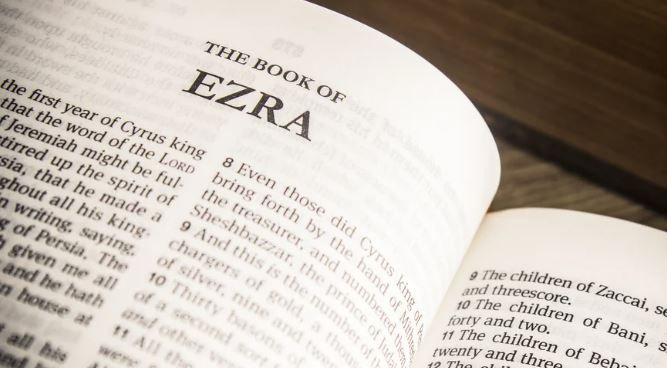Book of Zechariah Summary: Visions of Restoration and the Coming King
- Bible Believing Christian

- Aug 21
- 4 min read

Book of Zechariah Summary: Visions of Restoration and the Coming King
Zechariah is one of the most vivid and Christ-centered prophets in the Old Testament. Filled with dreams, visions, symbolic actions, and direct Messianic promises, his book points forward to the coming of the King who would enter Jerusalem on a donkey, be pierced, and ultimately reign as Lord of all the earth.
For beginners: Zechariah is about God’s encouragement to a discouraged people, calling them to rebuild His temple while looking ahead to the ultimate temple — Christ Himself and His kingdom.
Author, Date, and Setting
Zechariah was a prophet and priest who ministered in the same period as Haggai (c. 520–518 BC). After the Jews returned from Babylonian exile, they began rebuilding the temple but lost momentum amid opposition and discouragement. Haggai rebuked the people to resume work, while Zechariah encouraged them with visions of God’s purposes.
His ministry stretched further than Haggai’s, offering long-range prophecies that pointed not just to the immediate rebuilding of the temple but to the coming Messiah and the ultimate Day of the Lord.
Etymology and Name
Hebrew: זְכַרְיָה (Zəḵaryāh) — “Yahweh remembers.”
Greek (LXX): Ζαχαρίας (Zacharias).
Thematic tie: God’s remembrance of His covenant faithfulness is at the heart of Zechariah’s message — He has not forgotten His people, even after exile.
Zechariah in the Bible of the Early Church
The early church treasured Zechariah because of its explicit Messianic prophecies:
“Look, your king is coming to you. He is righteous and victorious, yet he is humble, riding on a donkey” (Zech. 9:9, NLT; fulfilled in Matt. 21:5).
“They will look on me whom they have pierced” (Zech. 12:10, echoed in John 19:37).
The thirty pieces of silver (Zech. 11:12–13) fulfilled in Judas’s betrayal (Matt. 27:9–10).
The Fathers saw Zechariah as one of the clearest prophets pointing to Christ’s passion and triumph.
The Prophetic Flow
Chapters 1–8: Eight Visions of Encouragement
Zechariah receives a series of night visions, each symbolic of God’s purposes:
A man among the myrtles (God watching over His people).
Four horns and four craftsmen (God overthrowing oppressors).
A measuring line (Jerusalem restored).
Joshua the high priest cleansed (God removes guilt).
The golden lampstand and olive trees (God’s Spirit empowers His work).
The flying scroll (God’s word judges sin).
The woman in a basket (wickedness removed).
The four chariots (God’s rule over the nations).
These visions culminate in the encouragement: “It is not by force nor by strength, but by my Spirit, says the Lord of Heaven’s Armies” (Zech. 4:6, NLT).
Chapters 9–14: The Coming King and Final Triumph
The latter half of Zechariah shifts into direct Messianic prophecy and eschatological hope:
The humble King riding on a donkey (9:9).
The Good Shepherd rejected for thirty pieces of silver (11:12–13).
The pierced One mourned (12:10).
God as fountain of cleansing (13:1).
The Lord’s climactic reign: “The Lord will be king over all the earth. On that day there will be one Lord — his name alone will be worshiped.” (Zech. 14:9, NLT).
Difficult and Shocking Passages
Zechariah’s visions are complex, sometimes bizarre — flying scrolls, women in baskets, horns and craftsmen. They remind us that prophetic imagery is symbolic, not always literal.
The rejection of the Shepherd in chapter 11 is shocking, pointing ahead to Christ’s betrayal and rejection by His own people.
The apocalyptic tone of Zechariah 14, with cosmic upheaval and nations gathered, is debated — some read it as literal, others as symbolic of God’s ultimate triumph.
How Zechariah Points to Christ
King on a Donkey (9:9): Fulfilled in Palm Sunday (Matt. 21:5).
Rejected Shepherd (11:12–13): Fulfilled in Judas’s betrayal.
The Pierced One (12:10): Fulfilled in Christ’s crucifixion (John 19:37).
The Cleansing Fountain (13:1): Fulfilled in Christ’s atoning blood.
Universal Lordship (14:9): Fulfilled in Christ’s reign proclaimed in Philippians 2:9–11.
Zechariah’s Christ connections are so explicit that the book almost reads like a Passion Week preview.
Common Misreadings
Over-literalizing the temple: Some read Zechariah’s temple visions as predicting a future third temple. But the NT applies temple imagery to Christ and His church (John 2:21; 1 Cor. 3:16).
Nationalistic readings: The book’s vision of God’s kingdom is universal, not narrowly political.
Treating visions as puzzles: The point of Zechariah’s visions is encouragement, not secret codes for speculation.
Application
Zechariah teaches us that God has not forgotten His people — He remembers His promises and fulfills them in Christ.
It calls us to rely not on human power but on God’s Spirit: “Not by force nor by strength, but by my Spirit.”
It challenges us to recognize Christ as the humble King and pierced Savior, not just the triumphant Lord.
And it gives us hope that no matter how small or discouraged God’s people may feel (as in Haggai’s day), His purposes will prevail and His kingdom will cover the earth.
Conclusion
Zechariah is a book of visions, promises, and hope. It calls a discouraged people to rebuild, and at the same time points beyond stone and mortar to the coming Messiah. Its prophecies of Christ are unmistakable — the donkey, the betrayal, the piercing, the fountain of cleansing. And it ends with the great hope: “The Lord will be king over all the earth.”
“Not by force nor by strength, but by my Spirit, says the Lord of Heaven’s Armies.” (Zech. 4:6, NLT)


